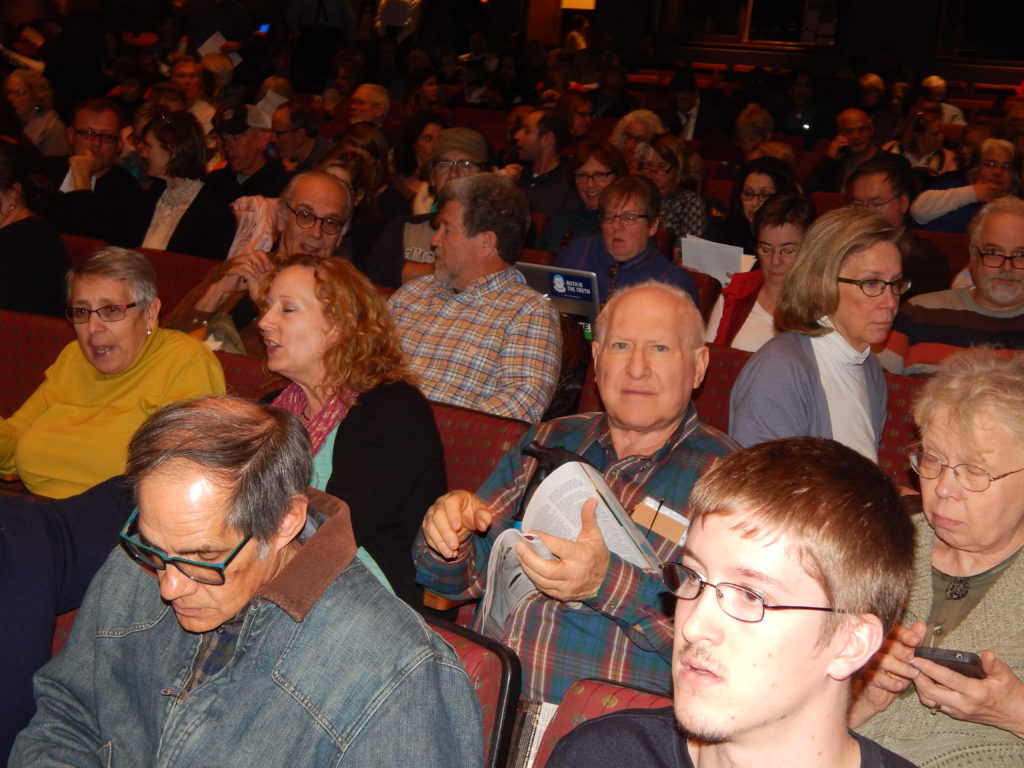The Center: What Criminalizing Abortion and Defunding the Police Share

Briefly stated, they are both folly. Because at their core, each intrudes into the basic fabric of our daily lives in counterproductive ways unwelcome to most, grounded on a surreal world view many of us do not share.
Defunding the Police
The notion that policing needs to be improved is not controversial. Where this initiative (pieces of which have already been enacted in places like New York City) falls apart is as a concept and in its execution.
My sense is the underlying, often unstated concept is that the police – riven with white privilege (even among many officers of color) cannot be trusted. The public version (which is truer) is that police violence is due, at least in part, to officers being called upon to handle domestic violence and mental health situations for which the police are ill-equipped. The “solution” is to carve out that aspect of policing from the police and instead assign it to trained social workers, who would accompany police officers in the field funded through a reallocation of police budgets. And if that redistribution of funds results in fewer police and fewer arrest, then there will be fewer instances of institutional racism within law enforcement.
The reality is otherwise. Crime rates on a relative basis are skyrocketing. Most Americans trust the police, and the decided majority of those who don’t still need and want an even greater police presence in their neighborhoods. Because without physical safety, everything else is an uncertain luxury. The money to fund social workers will come through reduced officer headcount and, therefore, less protective policing. And the notion that a social worker can, or would be willing to, enter highly charged, inherently unpredictable, and therefore dangerous situations is – well, you can fill in the blanks.
Whatever their supporters’ motivations, defunding the police is a policy the decided majority of Americans do not want. And it cannot, as a practical matter, work. Because less police equals more crime. Making defunding the police a lose/lose for all of us at great human and economic cost.
As such, this disconnect between what we want, what can work, and what we are getting may (and let us hope, will) signal the high water mark of unrealistic Progressivism.
Criminalizing Abortion
If you believe that life begins at conception, then abortion is homicide. If you don’t, it isn’t.
I am not a legal scholar and this column is not about Supreme Court decisions, the Supreme Court as an institution, or existing laws. It is about folly.
What the state of play will look like when the smoke clears on this issue is hard to discern. Some states are strengthening the legal right to an abortion. Many others are criminalizing it. Which cannot, as a practical matter, work.
First, let’s clear away some of the hyperbole. Criminalizing abortion is unlikely to return us to the days of backroom procedures routinely performed by untrained people in unsterile conditions. Medical science has advanced exponentially in the just under fifty years since Roe (i.e., the morning after pill). Most Americans support abortion under at least some conditions. And so do many states.
This does not diminish the fact that many women in many parts of this country will now suffer severe health consequences. However, blanket overstatements about a return to the world before Roe detract from the discussion, rather than adding to it.
Also sucking oxygen out of the room are those who contend that criminalizing abortion is an expression of purposeful racism against people of color. It is true that minorities have too little access to our health care system and, by extension, may be much less able to travel to states where abortion will remain legal than other groups. But that is also true for many whites. Nothing is more individually experienced than conception, abortion, and birth. When pundits blithely slide past that undeniable singularity, it suggests that they are more interested in remaining siloed inside their ideological comfort zone than engaging in the often promised but rarely delivered “conversation” about race in America.
The concept upon which criminalizing abortion rests is to end what millions of Americans in good faith believe is murder, replacing what they would describe as a culture of death with one that protects the sanctity of life. It will also effectively end the use of federal tax dollars to support abortions (and contraception), reversing the recently received truth that the most intimate of choices (entering into a voluntarily adult sexual relationship) is a healthcare right to be subsidized in part by those whom it deeply offends.
When viewed from inside one’s own body looking out, the benefit of assuring the sanctity of life is a relative one. Which is poor soil upon which to build absolutes. After all, if I am against abortion no one will force me to have one. Abortion may be the wrong choice. It may even be a choice that is contrary to God’s will. But it need never be my choice unless I make it so.
And criminalizing that choice is not feasible.
Many others have detailed myriad social and other costs of unwanted pregnancies more articulately than I can. We take a slightly different tack here. Which is to instead focus on some of the ways that criminalizing abortion will impact how women, men, and their families live day-to-day.
Let’s begin with intrusion. What makes a person’s home their castle is the ability to stop others from entering it. Indeed, this country’s founding fathers bristled at the British Army’s practice of quartering its troops in the homes of colonial Bostonians. It is hard to imagine a more intrusive government act then reaching inside and controlling a women’s womb.
With profound consequences.
What raising a child means – be it good, very good, or less good – is well known to every family and requires no description from me. Also unaddressed here are the myriad issues that pregnancies involving rape, incest, and health risks to the mother entail. Consider, though, a related point.
Most arguments about abortion assume healthy children. Yet not all children are born healthy. Some of them come to this world with shattering chromosomal and other issues. Which is not meant to suggest that any such child should be aborted. Rather, this very hard – and by no means rare – situation is a way to realistically assess what eliminating abortion can mean to my family and yours. In that situation, who should be allowed to make the call? The family being shattered, or the legislators chumming for votes?
Then there is the difference between the law and law enforcement. Already, we have seen some district attorneys and other law enforcement officials openly state that they will not enforce laws eliminating abortion. Inevitably, more will follow. Because our system of criminal justice is the architecture through which decisions are reached. Not an immutable self-executing institution. What makes it run are the individuals who run it; prosecutors who decide whether to bring charges and against whom, jurors who decide the facts of cases when brought, and Judges who referee the process after it is initiated and then impose outcomes.
Few (if any) of these actors have themselves robbed a bank and share that lived experience with bank robbers. Can we say the same about abortion? About fathers and mothers whose children made decisions as pre-adults that put them at a crossroad? Or wives, mothers and grandmothers who have been at that crossroad themselves?
In the Sermon on the Mount, Jesus described the “Golden Rule” as the second great commandment. Which sets a floor; not a ceiling, although that floor is quite high. The floor is to "Do unto others as you would have them do unto you." It is one thing to read about a situation faced by someone else, and quite another to live it yourself. Particularly if the reason why you have to do so is because a legislator who knows nothing about your life told you to.
In other words, criminalizing abortion invades the very fabric of our daily lives in unwelcome ways grounded on priorities that many of us do not share. And it can’t work. Rendering it a lose/lose approach at great human and economic cost that may (and let us hope, will) signal the high water mark of unrealistic Regressivism.
Building a Center Lane
I am an aspiring columnist, not a policy maker, and it would be unwise for me to drive too far outside my lane. At the same time, phrases risk being empty unless substance is breathed into them.
What, then, might a viable center lane look like for these two issues? That is, one enjoying general support that can be feasibly executed in ways that improve our lives or, at least, do not make them worse.
At 30,000 feet, the defunding the police initiative is so flawed that improving it would be relatively easy. Intensify officer de-escalation training. Plan for more rapid and comprehensive intervention by social workers on a situational basis (e.g., when it is safe for them to do so). Fund these enhancements with new, additional money, and not cuts to current police budgets. And if we have the appetite for it, let us try being as vocal defending the police when they turn out to be right as we are in attacking them when they turn out to be wrong.
The binary nature of the abortion issue precludes a win/win solution. But it need not be lose/lose, either. We can permit abortions while protecting the potential for life and acknowledging deeply held beliefs of those who would outlaw it. That center lane would likely include no partial birth abortions (except where the health of the mother is at stake). A return to the Hyde Amendment that prohibited federal funding for abortions also comes to mind. Along with ready access to the morning after pill as well as contraception, and setting gestational limits on abortions driven by fetal viability outside the womb.
That is, the same familiar formula that until about a week ago had basically worked in post-Roe America, with all its embedded ambiguity. Because not all familiarity breeds contempt, and not all change is good. We can worry about the impact of advances in fetal viability on the right to abortions after those advances happen; we need not do so now.
There is a bottom line to all of this. We don’t need a constitutional right to return to a time when America was more functional than it is now. Nor is that outcome so hard to imagine. We have only been where we are now for a handful of years. Very few of us are enjoying it.
Constructing a center lane between unforgiving guardrails is problematic. But distinguishing needs from wants, costs from benefits, and reality from ideology could make it easier to agree to disagree without making these (and other issues) zero-sum games that we intuitively understand no society can long endure. The amalgam of ethnicities, religions, races, and credos that is American society rests, at bottom, on degrees of consensus. It is a society worth protecting.






The term "chumming for votes" said it all. In a polarized context where - especially for one partisan group - any national consensus or bipartisan work are anathema no road seems to work. With the exception, of course, of that one side which already deems democrats, progressives, liberals, poc incapable of governing and illegitimate when they do. there is currently no political will to go in the directions suggested in this article. Unfortunately. Civic duty, national peace, compassion and respect for the "other side" are all rare traits these days. But - some of us keep trying and hopefully we'll succeed before national cataclysm forces change.